Antique Jewellery: Tips for Buyers
/If you’re a fan of antique jewels, determining the age and authenticity of an item can be tricky. It is particularly difficult if you are making the purchase sight unseen over the internet, or on good faith of the word of the seller. Megan Austin discusses the intricacies involved when attempting to determine the age and authenticity of a jewel.
There are tricks that a creative jeweller can use to marry antique and modern elements to produce convincing looking ‘antiques’. For example, a genuine setting can be replaced with one that is non-original. Or, the purpose of a jewel can be changed; an earring may be converted into a brooch or a brooch converted into a ring. The result is termed a ‘mixed marriage’, or less a flattering term ‘Franken-jewel’. Another point to consider when assessing the authenticity of a jewel is the identity of the gemstones. Are they original to the piece, or have they been swapped out with other gemstones, perhaps even modern ones that could be synthetic or treated? Another key consideration is any evidence of repairs that may result in genuine hallmarks being defaced or so illegible as to be useless when determining age/authenticity.
Buyers should expect some degree of puffery in the sellers advertising. But ultimately, it’s up to you to ascertain what is fact from fiction. To protect yourself, only buy jewellery from sellers who offer a money-back guarantee within a reasonable time frame if the item is not as described. Check out these examples of bejewelled rings that started life as something different.
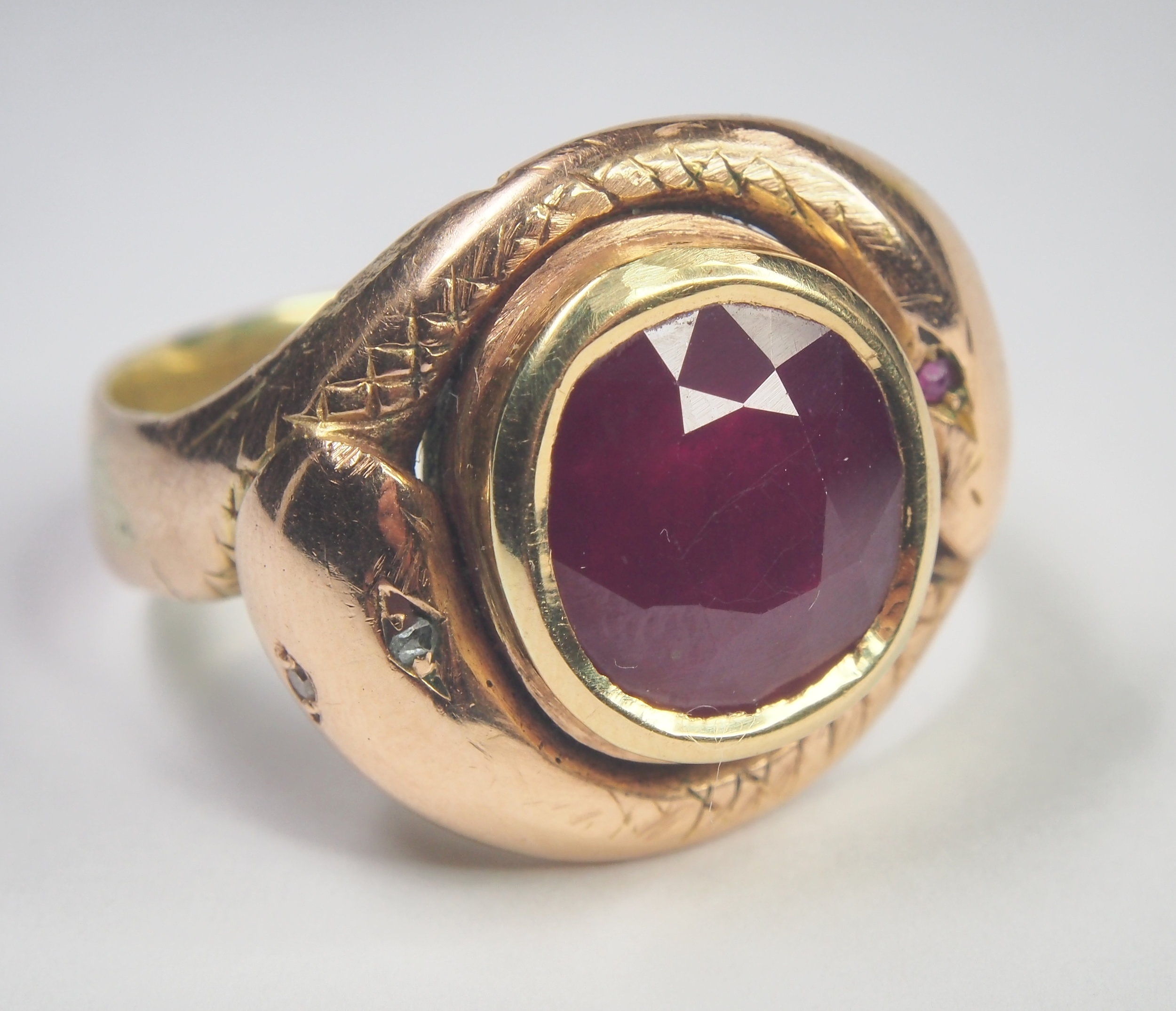
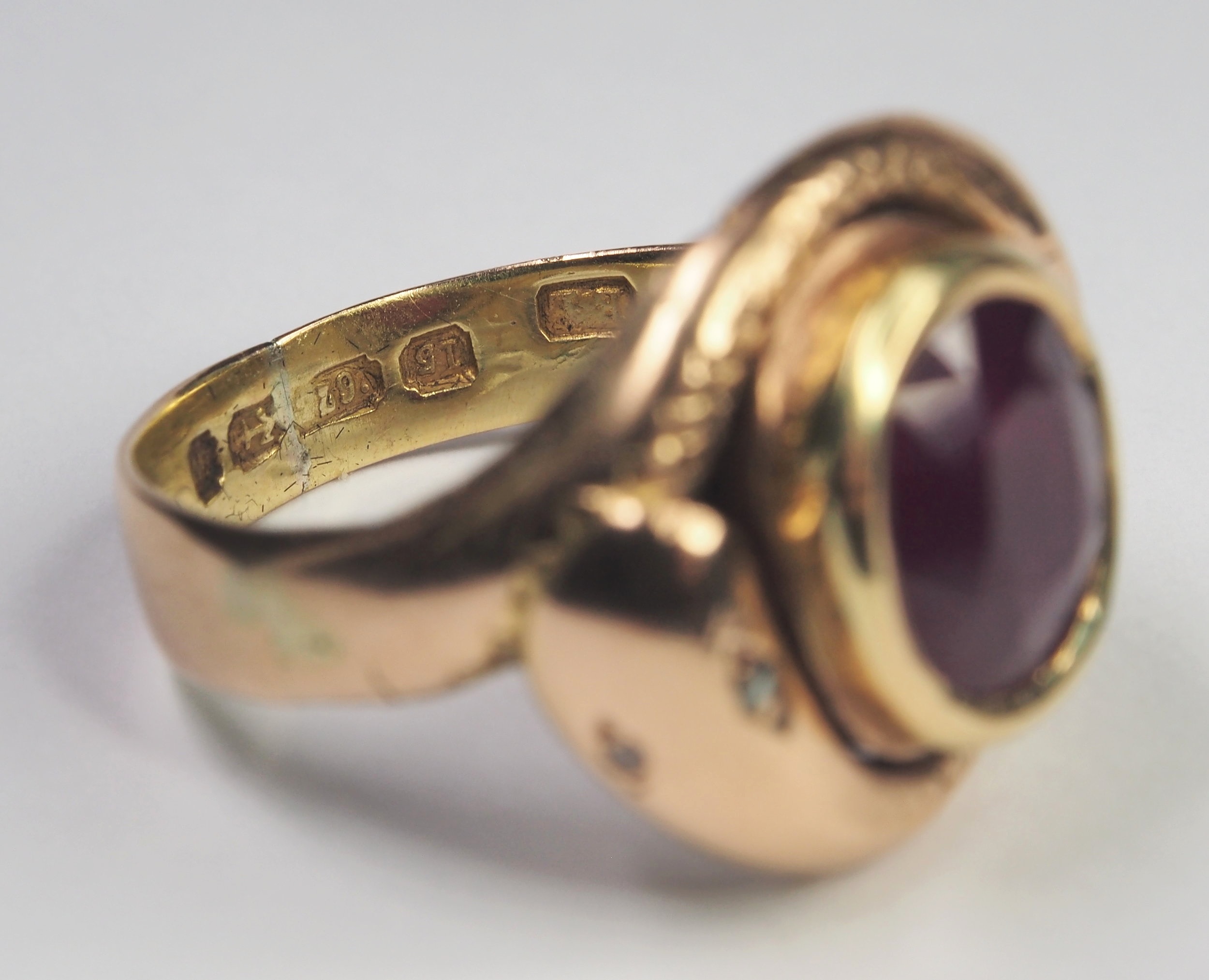

The ring featured above was purchased online as a genuine antique and submitted to me for assessment.
At first sight, this ring appears to be antique, for several reasons. It contains serpent motifs typical of antique jewellery, and the metal is a pleasant light rosy colour that is so often seen in older rings. It has some nice looking hallmarks too, and shows the wear and tear that you would expect from a well-loved ring of this era, along with some additional marks from repairs and resizing. So far, good good. Next, out comes my Bradbury’s book of hallmarks. The hallmarks turn out to be legitimate, confirming that the ring is 15ct gold and antique, and was made in England, Birmingham. The date mark is too unclear to decipher, but the rest looks convincing enough. Looks ok right?
Look closer, much closer.
When acid tested, the centre setting is crafted from 18ct yellow gold; a different carat to the body. This indicates that the setting is non-original. But the most remarkable feature which screams Franken-ring is the large red coloured stone which tests as a modern ruby/glass composite worth a few dollars per carat. Unfortunately, whatever happened to the original centre stone, we will never know. As the original ring has been modified, the value drops. The same concept applies to Franken-watches such as Rolex or Breitling that have had aftermarket components added to them.
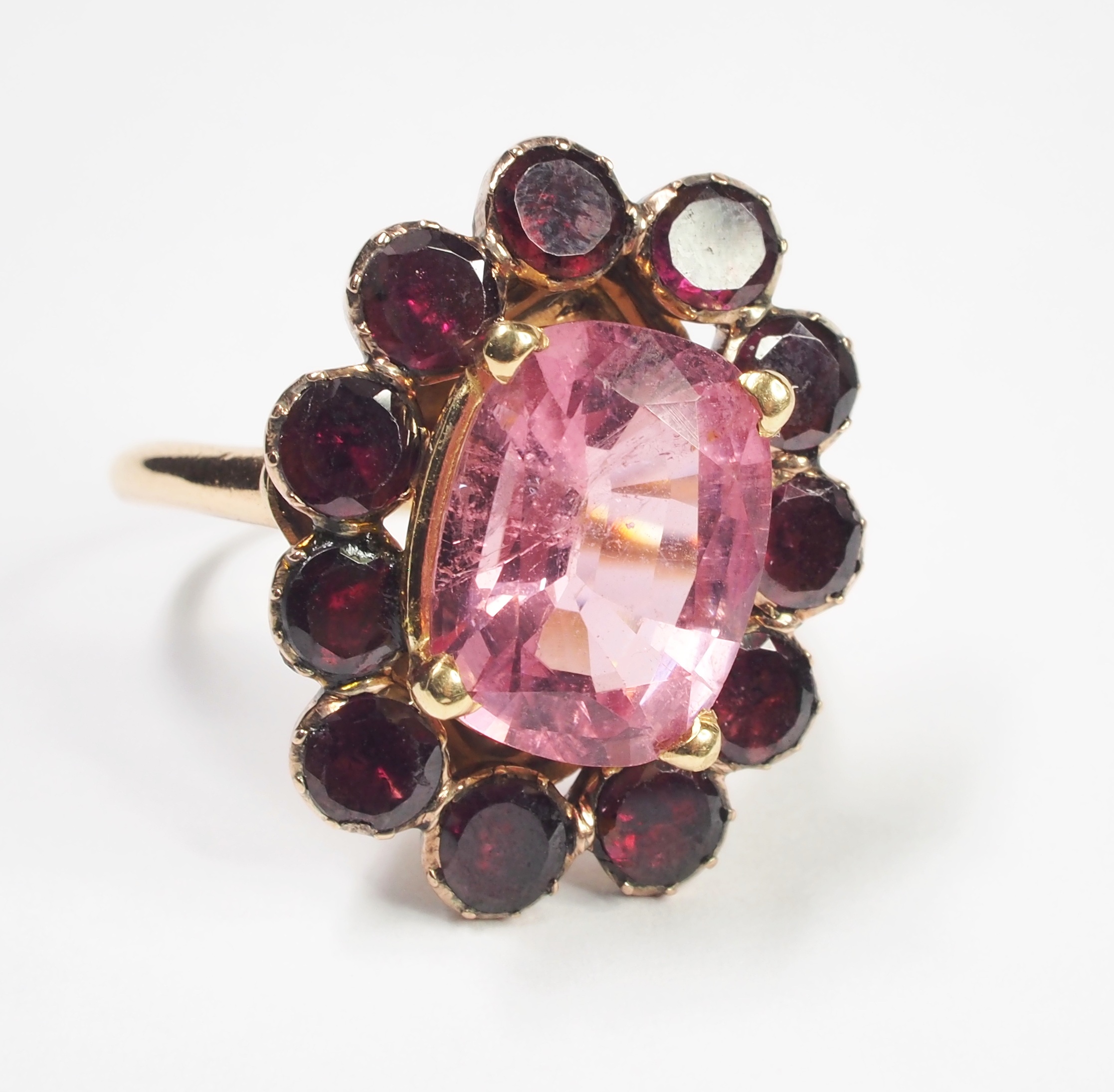
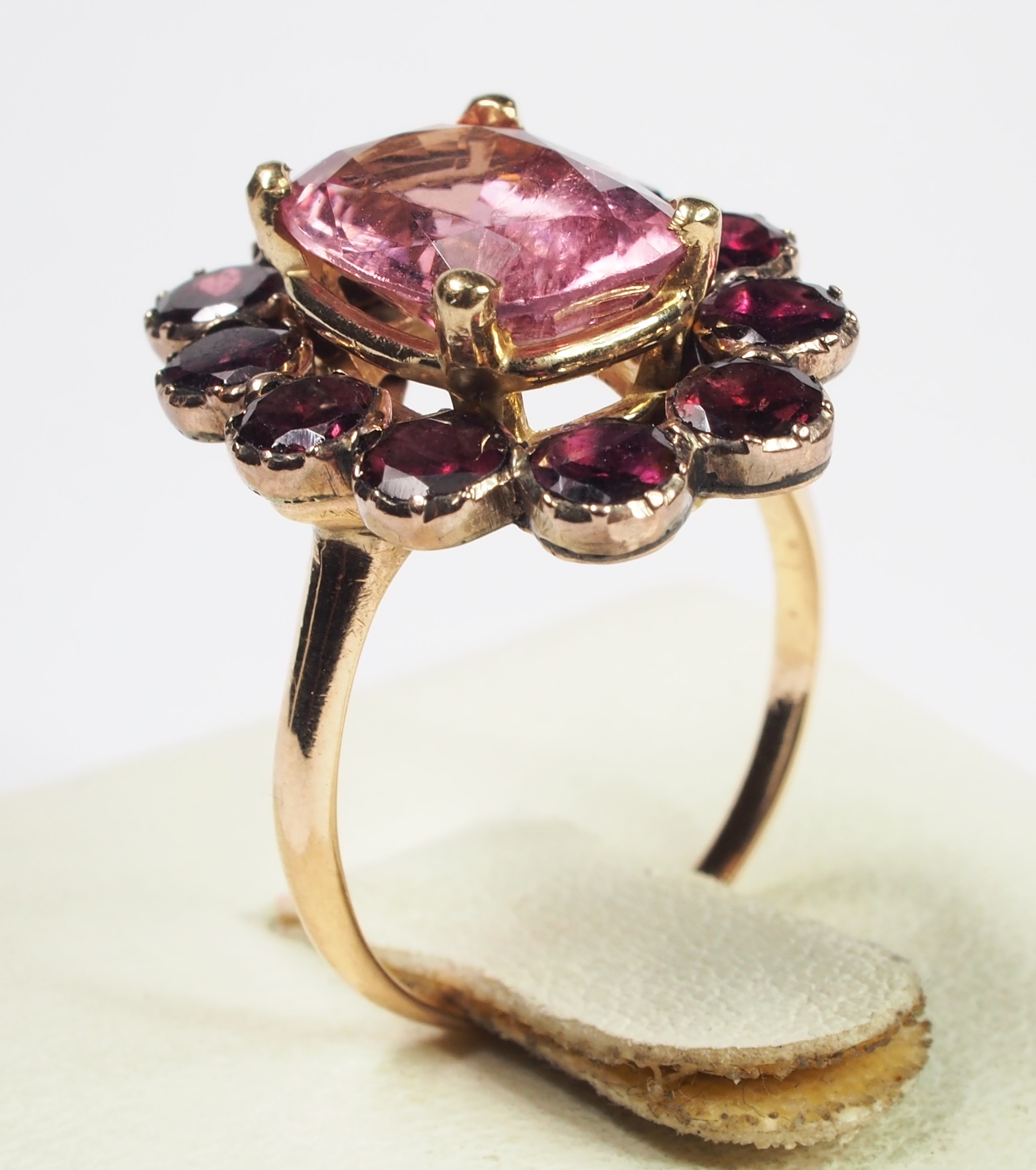
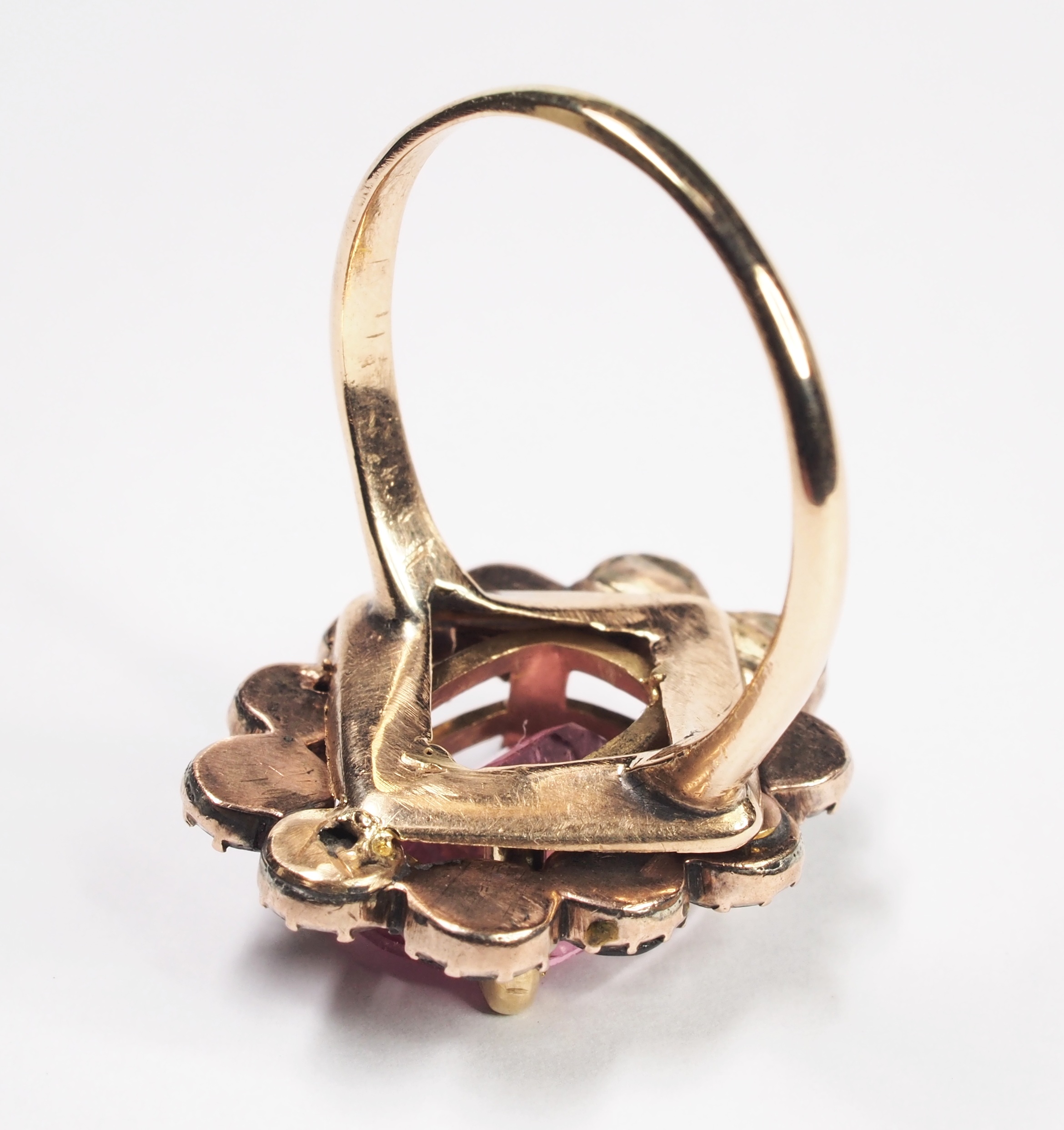
The next ring is another beautiful example of a mixed marriage that contains three different elements and three different types of gold from different era’s. The 9ct rose gold foil backed garnet cluster is antique and was converted from a brooch, as evidenced by the solder remnants to the back. Set to the centre of the cluster is a modern 9ct yellow gold setting containing a modern cushion cut pretty pink tourmaline. Finally, a 14ct rose gold band and underrail was soldered to the underside of the cluster to complete the marriage.
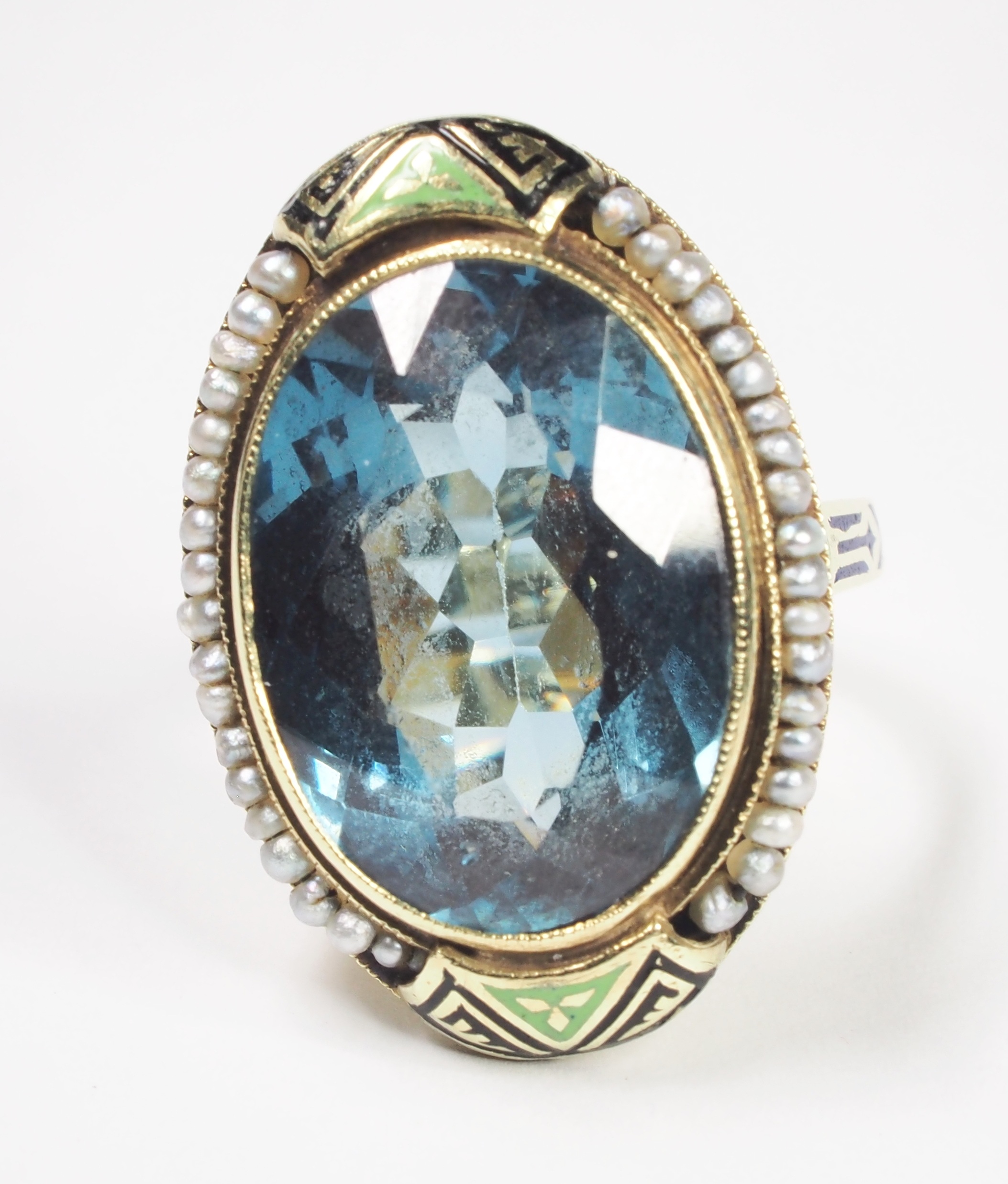
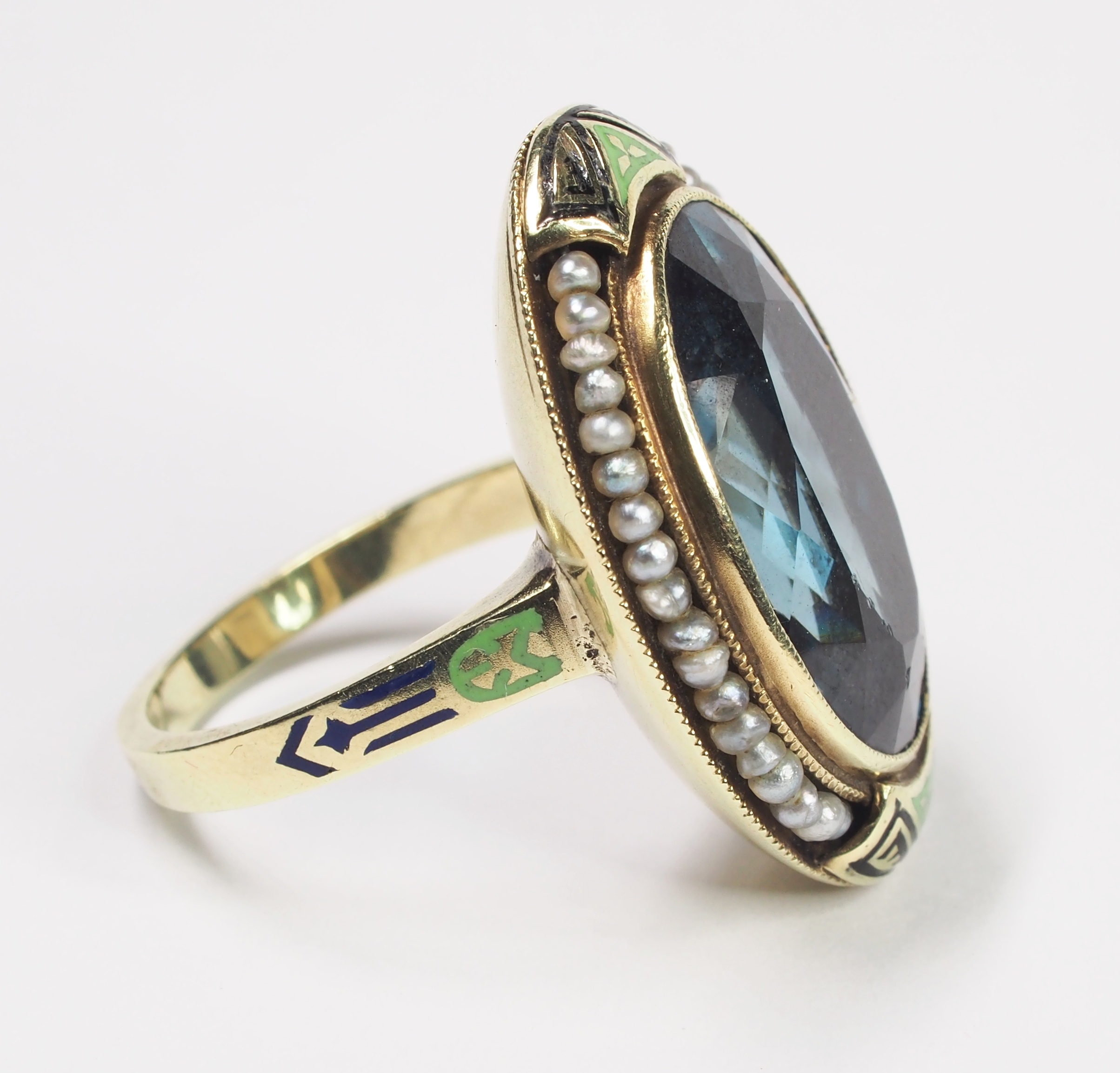

At first glance, the last example also looks like it could be antique. It contains traditional vitreous enamelling to the setting and shoulders, has some natural seed pearls and a rather large blue stone which could be paste. However, the inside of the band has a modern ‘14K’ stamp, which indicates a more recent incarnation, and the ring has a combination of cast and handmade techniques. Gemmological tests reveal the centre gemstone to be a synthetic colour change spinel, which is a very modern invention. This gem changes colour from blue in daylight equivalent light to red in incandescent light in an attempt to mimic alexandrite. In this particular case, this piece appears to be a marriage of antique and modern elements but has been altered so much that the original age is unidentifiable.
If you have bought an item of jewellery described as antique make sure you have it authenticated and valued by contacting Megan Austin Valuations. (07) 3210 1975.

